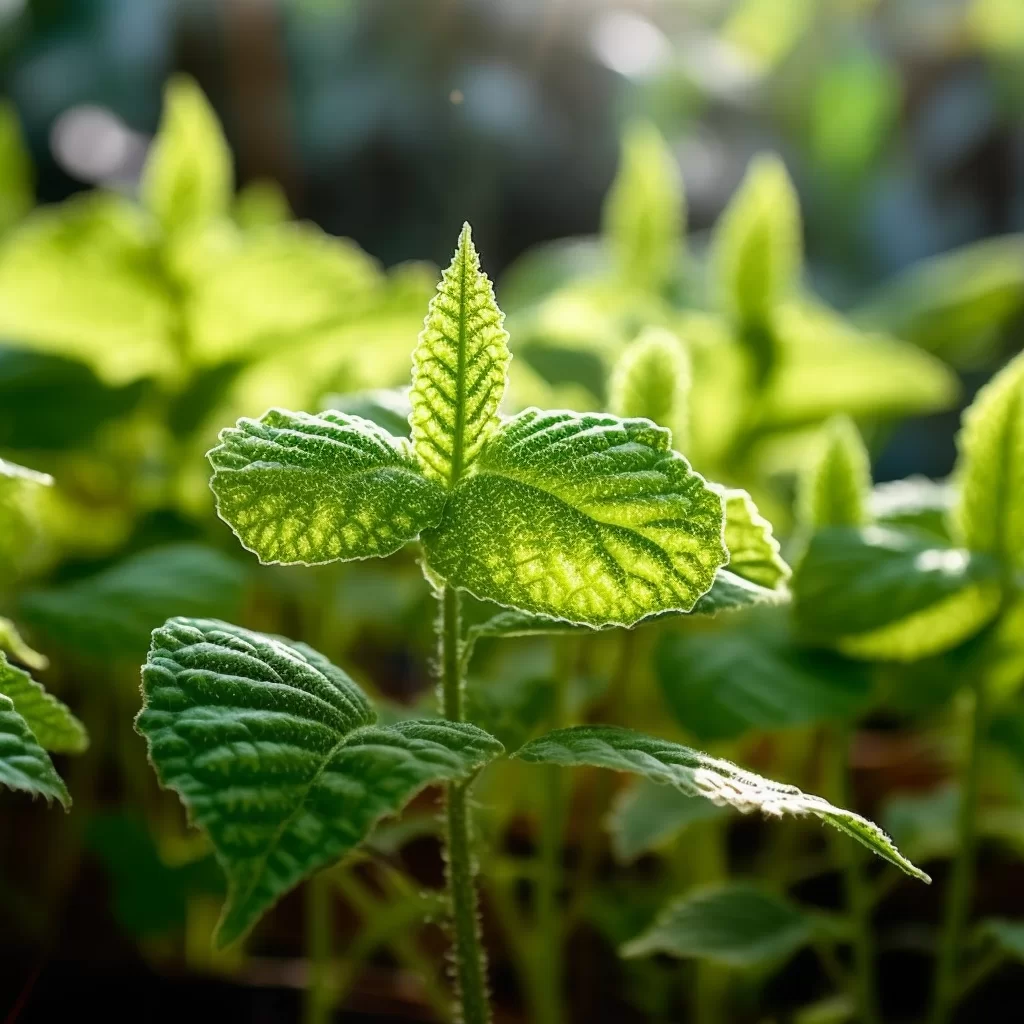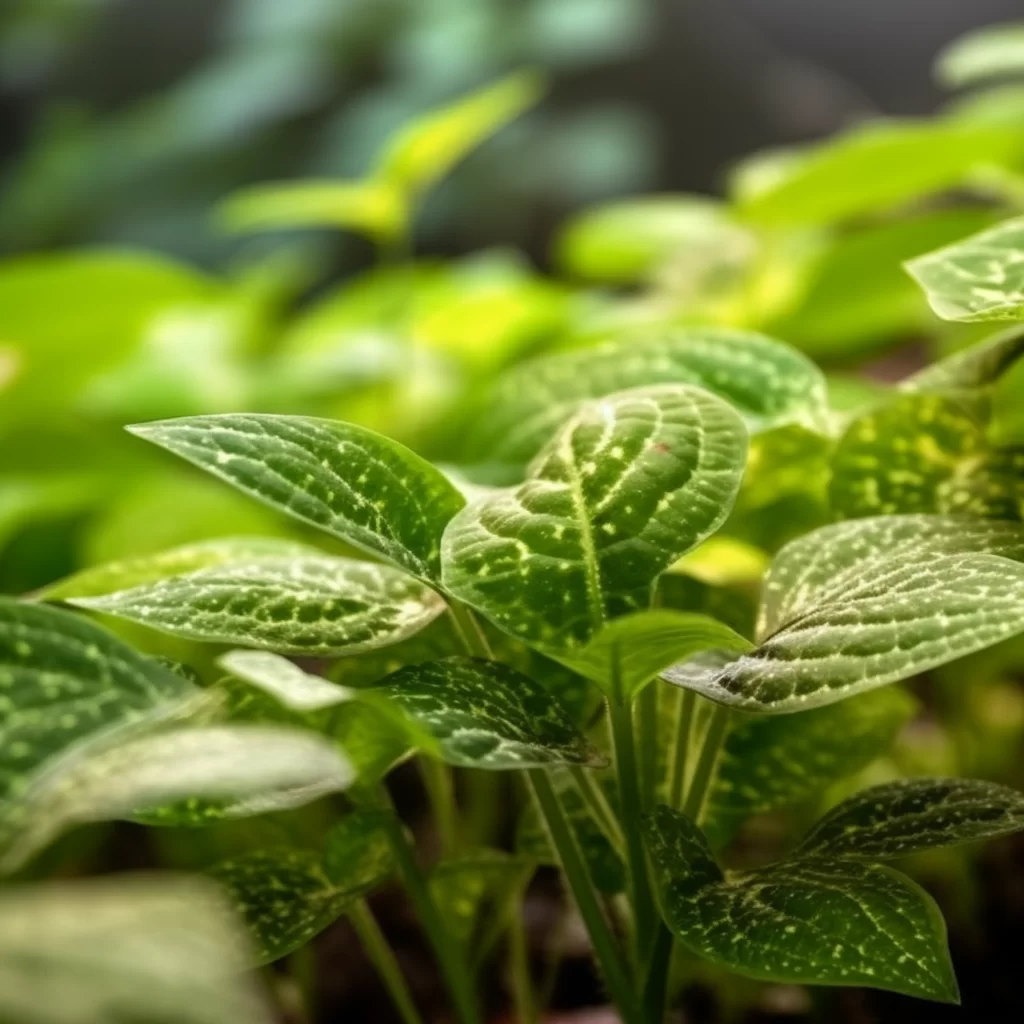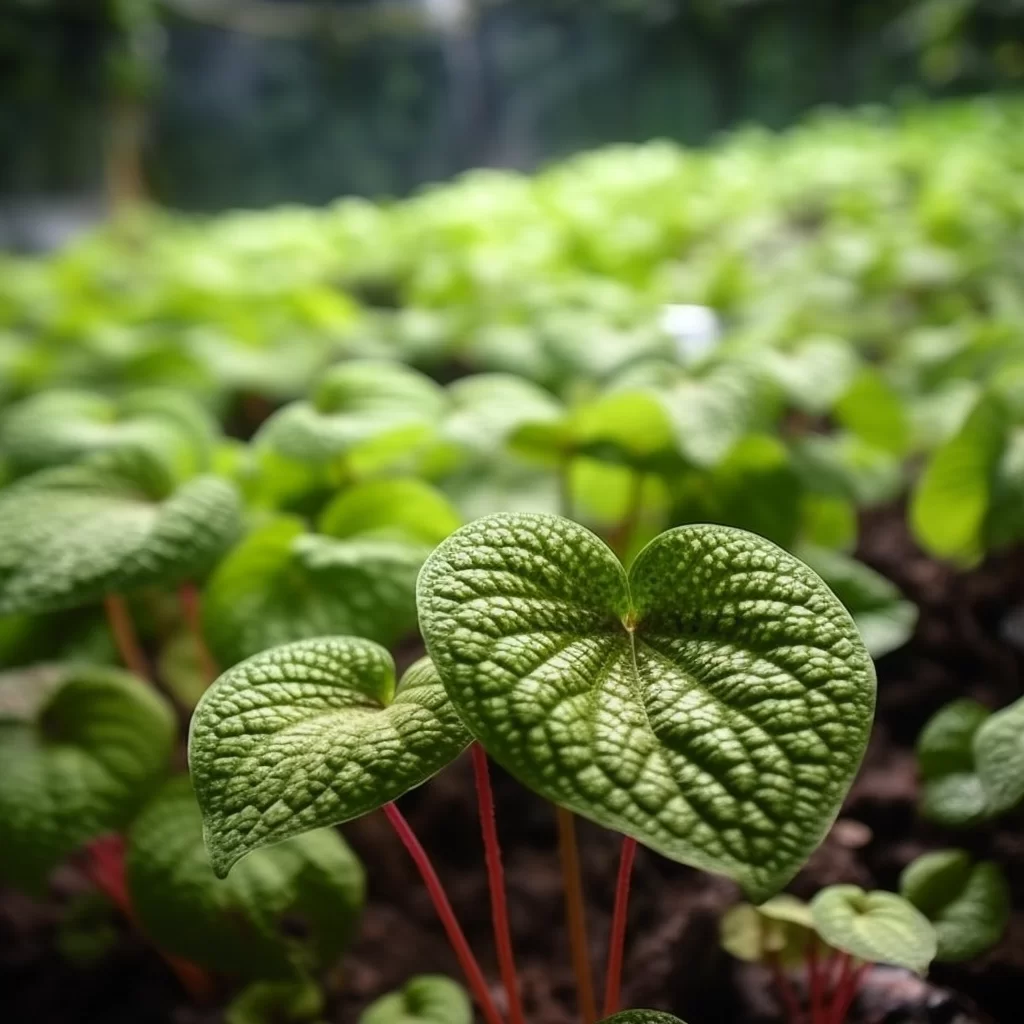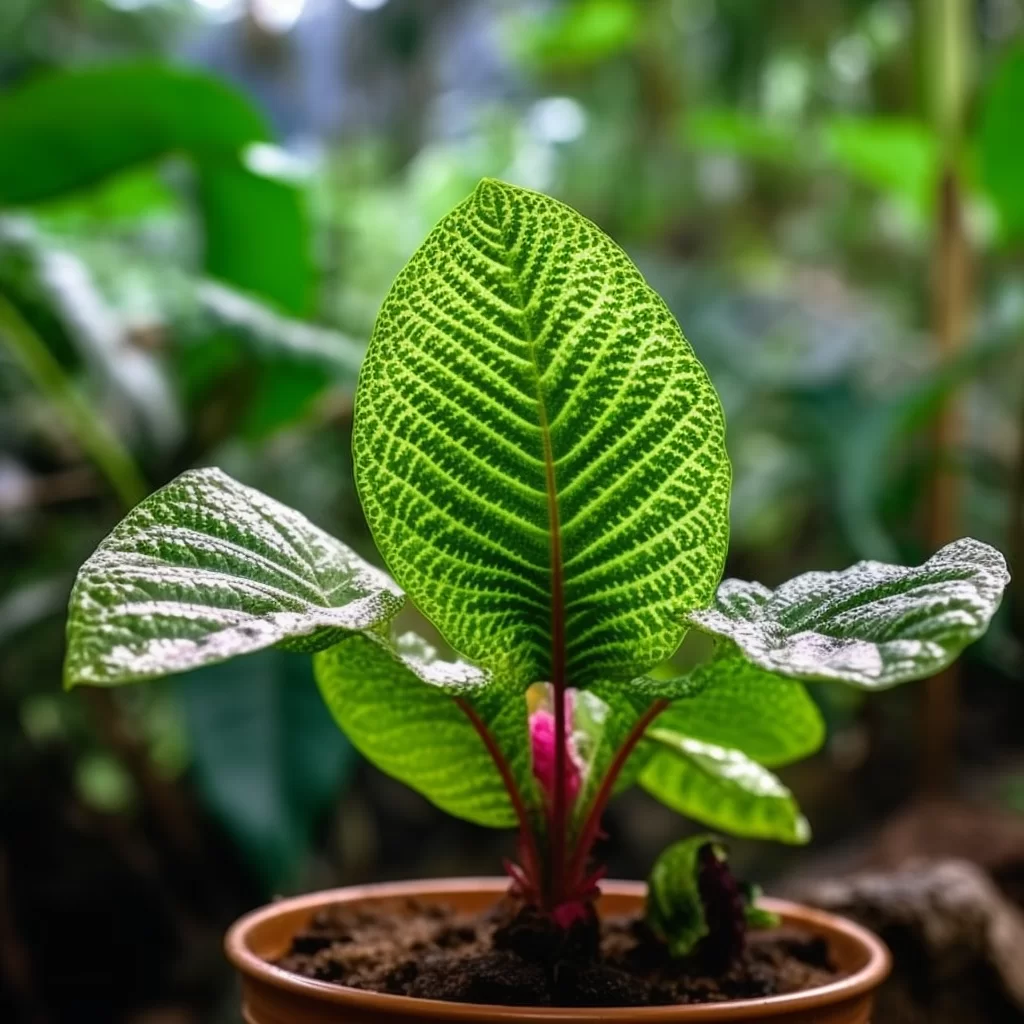Story of Day :
Contents
The Perilla Plant: The Complete Guide and Care Tips for Gardeners
If you’re someone who takes pride in growing distinctive plants, then the perilla plant is one that deserves a spot in your garden.
Originating from Asia, this unique plant can add a burst of color and flavor to your garden.
With its different names such as shiso or beefsteak plant, perilla is an exciting addition to any gardener’s list.
In this guide, we will delve into everything you need to know about cultivating these fascinating plants.The Perilla plant comes with multiple benefits that make it worth growing in your garden.
It has been known for centuries for its numerous health benefits and flavorful properties.
Its leaves are used as an excellent ingredient in many Asian cuisines and have recently gained popularity worldwide for their nutty flavor and aroma.
The Perilla plant also has a beautiful appearance; the deep purple-green colors of its leaves make it stand out among other plants in the garden, adding character to any space it occupies.
All things considered; the perilla plant is undoubtedly a fantastic addition to any gardener’s collection of unique plants!
What is a Perilla Plant?
The perilla plant is a type of herb that belongs to the mint family.
It’s an annual plant with broad leaves that have jagged edges.
You can find perilla plants with leaves in various colors, including green, purple, red and even bicolor combinations.
The flowers of this plant are not very big and tend to have white or pinkish-purple colors. Perilla plants are quite popular for their medicinal properties and for being used as food flavouring in some countries.
Perilla plants are quite popular for their medicinal properties and for being used as food flavouring in some countries.
They’re known to be a rich source of essential fatty acids like omega-3, which help lower inflammation in the body.
Moreover, these plants also contain antioxidants that help fight against free radicals and prevent oxidative damage to cells in our bodies.
With its vibrant leaves and unique taste profiles, it’s no surprise why many people love growing Perilla frutescens at home gardens or using it in their cooking recipes – especially if you’re looking for something different from the usual herbs one would use!
Perilla, a popular plant in Asian cuisine, boasts a unique flavor profile that is reminiscent of basil with subtle hints of mint and anise.
The leaves of the perilla plant are often used as a garnish or ingredient in various dishes across Asia.
Its distinct taste adds depth and complexity to soups, salads, stir-fries, and sushi rolls.
The versatility of this herb allows it to be used in both sweet and savory dishes alike.Apart from its culinary uses, perilla is also known for its medicinal properties.
It contains high levels of antioxidants and anti-inflammatory compounds that can help improve respiratory health and reduce the risk of chronic diseases such as heart disease and cancer.
Additionally, perilla oil extracted from the seeds contains omega-3 fatty acids that are beneficial for maintaining good cholesterol levels in the body.
Overall, incorporating perilla into your diet not only enhances the flavor profile but also offers numerous health benefits!
Growing Conditions

Perilla plants are well-suited to warm weather conditions, thriving in temperatures between 65°F and 85°F (18°C – 30°C).
To keep these plants happy, it is important to provide them with soil that has good drainage properties and plenty of organic matter for nutrients.
While they require at least six hours of sunlight each day, perilla plants can also grow in areas with partial shade.When growing perilla plants, it is important to note that they are best suited to warm climates.
As such, temperatures between 65°F and 85°F (18°C – 30°C) are ideal for their growth and development.
The soil used should be well-draining with plenty of organic matter added in order to provide the necessary nutrients for the plant’s health.
Perilla needs a minimum of six hours of sunlight daily but can also tolerate some degree of shade if placed accordingly.
These factors combined will ensure that your perilla plant thrives throughout its growing season!
Planting Perillas
- Sow seeds indoors four weeks before the last frost date or directly sow them into the ground after danger of frost passes.
- Plant seeds ¼ inch deep into moist soil.
- Space seedlings at least six inches apart when planting outside once they have grown their second set of leaves.
If you have perillas in your garden, there are a few things you can do to take care of them.
During their growth season, it is crucial to make sure they receive regular fertilization using a balanced fertilizer.
This helps maintain the health and vigor of the plants.
Additionally, water them regularly to keep the soil moist but not too wet as it can lead to root rot.
Removing flowers is also important as it encourages more leaf growth and prevents invasive self-seeding that can be problematic in some areas. Perillas are relatively low maintenance plants but require attention for optimal growth and longevity.
Perillas are relatively low maintenance plants but require attention for optimal growth and longevity.
Fertilizing provides proper nourishment while watering ensures ideal hydration levels for healthy development.
Removing flowers reduces environmental impact by preventing unwanted spread and promoting lush foliage growth that enhances aesthetics.
Following these simple tips will help ensure your perillas thrive and contribute positively to your garden’s overall appeal with minimal effort on your part!
Harvesting Perilla Leaves
Perilla plants are easy to grow and provide a myriad of health benefits.
Once the leaves have reached six inches in length, they can be harvested at any time.
However, it is best to do so before the plant starts to flower, as this ensures maximum flavor.
You can also pinch off leaves throughout the growing season as needed, but it is important to leave at least two sets of leaves on each stem for continued growth.Harvesting perilla leaves is a simple process that requires only a few steps.
First, locate the mature leaves that are at least six inches long.
Then carefully pluck them from the stems using your fingers or scissors and store them in an airtight container until ready for use.
By harvesting regularly and leaving some foliage intact on each stem, you can enjoy fresh perilla throughout the growing season while ensuring healthy growth for future harvests.
Whether used raw or cooked in various dishes, these flavorful leaves are sure to impress your taste buds with their unique aroma and taste!

Pests and Diseases
Perilla plants are a great addition to any garden as they are low maintenance and rarely suffer from pest problems.
However, it is important to keep an eye out for aphids or whiteflies, which can occasionally attack these plants.
If you do notice an infestation, it is important to act quickly before the problem becomes severe.
Using insecticidal soap or neem oil early on can help you control these pests and protect your perilla plants from damage.Overall, caring for perilla plants is relatively easy and straightforward as they require minimal effort to thrive in most environments.
However, like any other plant species, they may be susceptible to certain pests that can cause significant harm if left untreated.
By keeping a close eye on your perilla plants and treating any issues early on with appropriate methods such as insecticidal soap or neem oil, you can ensure that your garden remains healthy and beautiful all year round!
Fungal diseases may be the bane of a gardener’s existence, especially during times of high humidity or moisture levels.
Downy mildew and powdery mildew are two common fungal diseases that can cause significant damage to plants.
To prevent these diseases from taking hold, it is important to ensure good airflow around your plants by spacing them adequately and avoiding overhead watering whenever possible.
By doing so, you can lower the moisture levels around your plants and reduce the likelihood of fungal spores finding a home on your greenery.Proper plant care involves more than just watering and fertilizing; it also requires paying attention to environmental factors that can lead to disease.
Fungal diseases like downy mildew or powdery mildew are particularly prevalent in humid conditions, making it important to keep an eye on moisture levels in your garden.
One way to combat these infections is by promoting air circulation through proper plant spacing and avoiding overhead irrigation methods if possible.
By following these simple tips, you can help protect your garden from fungus-related problems while enjoying healthy greenery throughout the growing season.
When it comes to cooking, the culinary uses of ingredients are endless.
From spices and herbs to meats and vegetables, each ingredient brings a unique flavor and texture to a dish.
Spices like cinnamon or cumin can add warmth or earthiness respectively, while herbs like basil or thyme can bring freshness or depth.
Meats such as chicken or beef provide protein and richness, while vegetables like carrots or spinach offer nutrition and vibrant colors.Knowing how best to combine these ingredients is what makes cooking an art form.
The right combination of flavors can transform a simple dish into an unforgettable meal.
Whether baking sweet treats for dessert or whipping up a hearty soup for dinner, understanding the culinary uses of different ingredients is essential for creating delicious meals that satisfy both the palate and the appetite.
Perilla leaves are a common ingredient in Asian cuisine, known for their versatile nature.
They can be used raw or cooked in a multitude of dishes, such as sushi rolls, soups, stews and stir-fries.
These fragrant leaves also make excellent condiments when pickled or fermented into umeboshi plum paste or shiso-jio – a kimchi-style relish popular in Japanese cuisine.Whether you prefer them fresh or preserved, perilla leaves are an essential component of many Asian recipes.
Their unique taste adds depth and complexity to dishes that would otherwise lack flavor.
So the next time you’re looking to spice up your cooking game with something new and exciting, consider incorporating perilla leaves into your culinary repertoire!
Conclusion
Growing perilla plants is an excellent way to add some unique color and flavor into your garden while also providing valuable ingredients for cooking.
With proper care including regular fertilizing; adequate watering; removing flowers timely; pest control measures; harvesting techniques coupled with incorporating this herb into various dishes, these plants can be an exciting addition to any garden space.